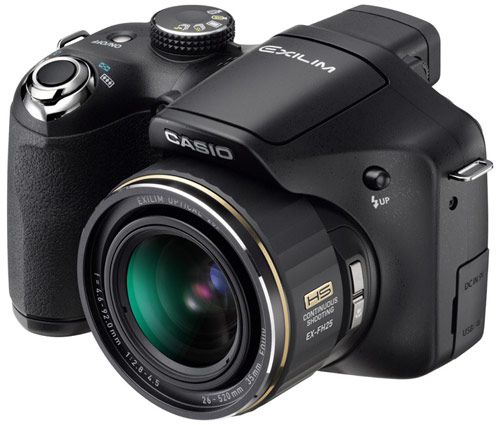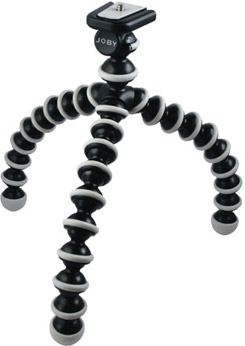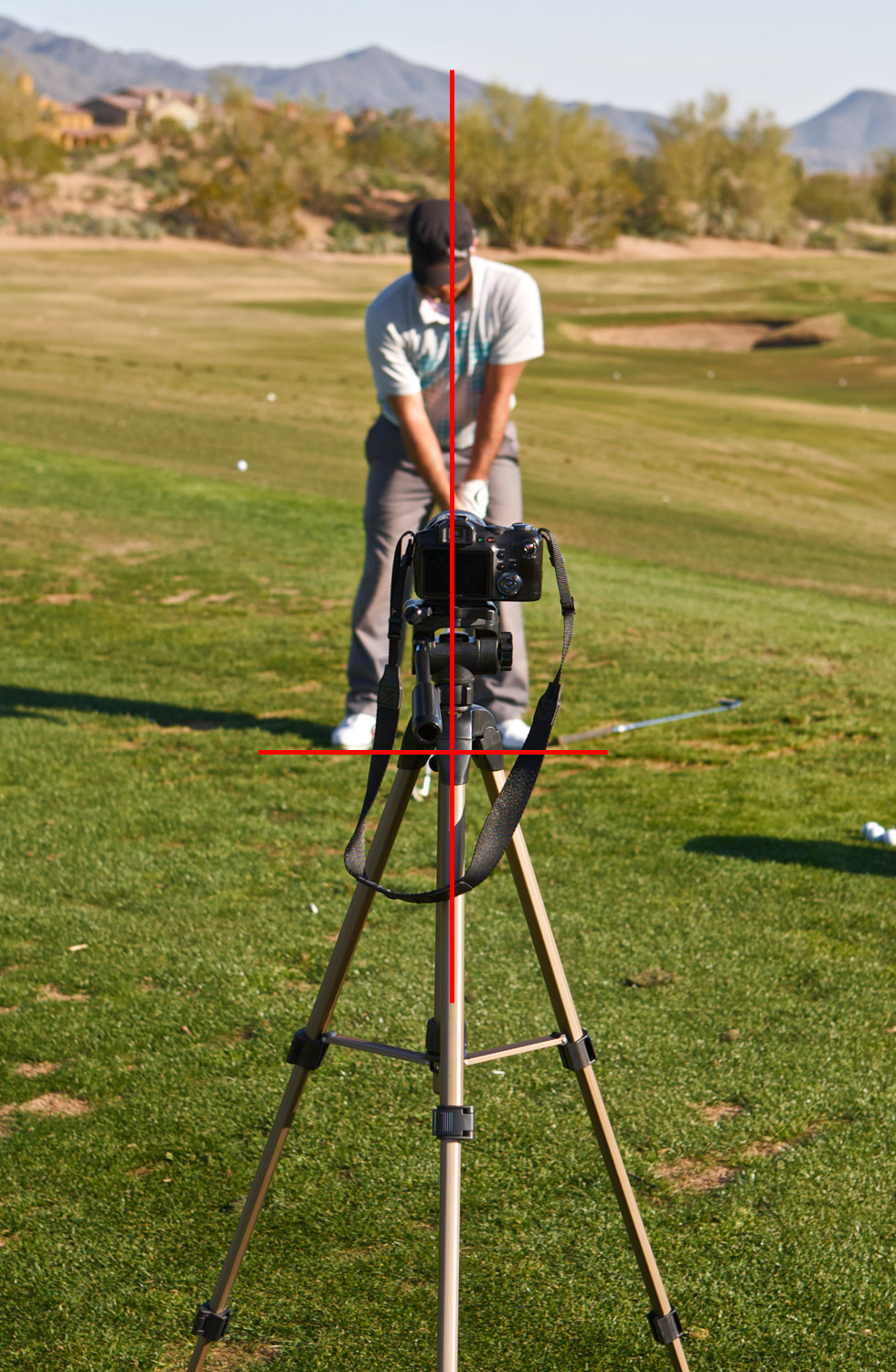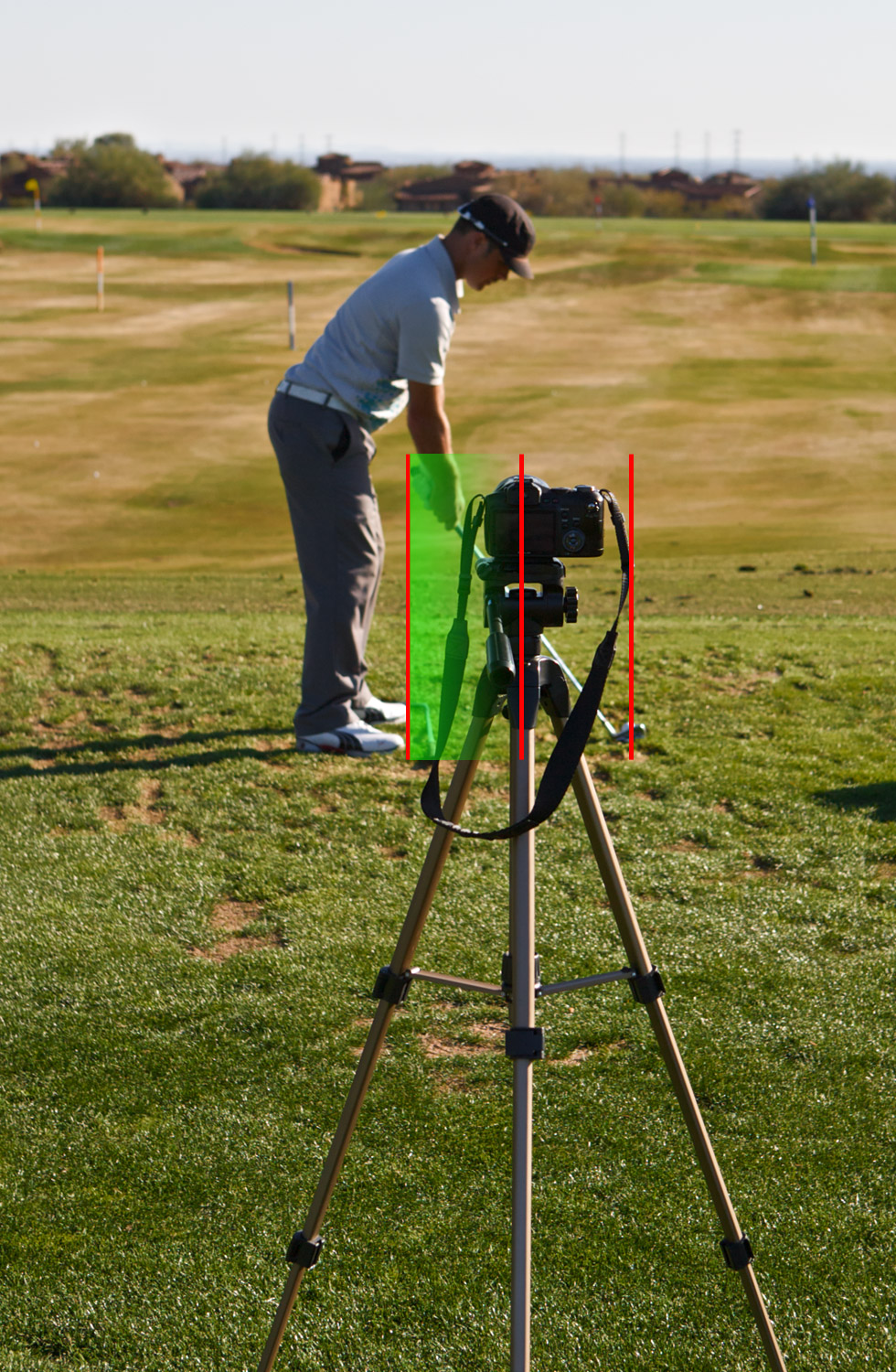 Vijay Singh was once famously quoted for saying that he doesn’t look at his swing on video because he’d be tempted to make it look pretty rather than focusing on building a swing that works. This quote is often used by people trying to justify why they won’t record their swing or buy a camera.
Vijay Singh was once famously quoted for saying that he doesn’t look at his swing on video because he’d be tempted to make it look pretty rather than focusing on building a swing that works. This quote is often used by people trying to justify why they won’t record their swing or buy a camera.
Unfortunately, Vijay’s quote was taken out of context, misunderstood, or was simply untrue. Singh has used high-speed cameras to record his swing for years and maintains a large library of his videos. While practicing, he often has his caddie or others record his swing, and will stop to look at things and make adjustments.
I think that what Vijay Singh was trying to say is that he values function over form. That’s fine – and something virtually every good golfer has in common. And while it’s true that form follows function in the golf swing, the opposite is also true: function follows form. A high-speed video camera is a useful, valid tool in improving both the form and function of your swing.
High-Speed Cameras
A few years ago I really liked the Kodak Zi6 (since replaced by newer, slightly better models) pocket video camera because it recorded HD 720p video at 60 frames per second (fps). The HD quality was nice, but the 60 frames per second video was what I was after.
Nowadays, cameras costing as little as $100 can record reasonably sized (not HD, but large enough) video at 120 fps, 240 fps, or even higher framerates!
The current king of the reasonably-priced-high-framerate-video cameras is Casio, with a fairly broad selection of cameras that will suit the needs of virtually every golfer out there.
Casio entered the market with their flagship EX-F1 camera, which cost about a thousand dollars, recorded 300 fps video at 512 x 384 resolution, and sold really well to up-to-date instructors eager to use available technology. Fortunately for golfers, Casio’s less expensive cameras have eaten into the F1’s market share, and the F1 appears to have been discontinued.
The new king of the hill is Casio’s FH25 camera (shown above), priced at about $300 at the time of writing. The FH25 will record 240 fps video at 448 x 336 and 120 fps video at 640 x 480 (it can also record 420 fps video at 224 x 168, but that’s far too small to be of any use and overkill on the speed). The FH25 features a large 3″ screen for viewing the video right on the camera, trimming features first introduced on the F1, and two features that come in handy for golfers: a 2-, 5-, or 10-second delay timer that works not only with still images but also movies and a “pre-record” feature that lets an instructor or friend record only enough video to capture your swing without also recording your pre-shot routine.
Casio also has a series of pocket cameras – much slimmer than the FH25 – that work quite nicely and slip easily in a golf bag. The current king of that crop is the FC150 which will, like the FH25, records 240 fps video at 448 x 336. The FC150 will set you back about $225. If you can find the previous model – the FC100, which runs less than $200 – it will record 210 fps video at 480 x 360 and is an absolute steal, particularly in good outdoor lighting.
Though I’ve only recommended Casio cameras here, I realize that not only will this article be outdated the instant I publish it, but that other cameras out there likely have similar features. If you’re looking for a camera to record your golf swing for analysis, here’s what you’ll want to get:
Framerate vs. Frame Size
The higher the framerate the better, but not at the expense of the video’s frame size. For example, many of the Casio cameras can record 1000 fps, but not only is that overkill, you’ll also get a video roughly the size of your pinkie fingernail. In the end, a framerate of about 100 is a good floor and a frame size of 400 x 300 is the frame size floor. Buy a camera that can record video at more than 100 fps and more than 400 x 300 pixels.
Shutter Speed
Ideally the camera you buy will let you manually control the shutter speed and the framerate. A camera that records at 150 fps but with a shutter speed of 1/150th of a second will result in a blurry club, particularly on the downswing, and won’t be of much help. With the Casio FH25, I routinely shoot video outdoors at 1/4000th of a second, and manual control of the shutter speed is a high priority. Most cameras that let you control the shutter speed will have a good ISO or Auto-ISO function as well – the two go hand-in-hand in helping you to get a proper exposure (a bright enough image).
Video File Format
Though uncommon these days (more common for Windows users based on what I’ve seen and heard), you want to choose a video camera that supports a video format your computer can play. Most cameras these days shoot H.264 video or .AVI files, so you should be fine, but beware of any unusual video file formats.
Extras
 In addition to a camera, there are a few other accessories you may want to buy.
In addition to a camera, there are a few other accessories you may want to buy.
Tripod
First off, you may want to buy some sort of tripod. This could be anything from the $30 Gorillapod (shown on right), which can attach to a push cart, a golf car, your driver, etc. to a more expensive tripod. I have a Gorillapod attached to my pocket-sized FC100 and a $99 tripod with a little ball head for my FH25. If you’re in a pinch, search the Internet for “bottle cap tripod” or buy this
The purpose of a tripod? To keep your video stable. It’s tough to do any sort of analysis of your swing when the camera moves even a little. And trust me – regardless of how still you think you can be, a tripod is going to be better.
Reasonably Fast Memory Cards
Memory cards – typically an SD memory card for the types of cameras we’re discussing – come in a variety of sizes and speeds. I recommend a 4 GB card or larger (if only because they’re practically as inexpensive as smaller cards). The biggest price determinant in memory cards these days is speed. Speed will affect how smoothly video plays back on the camera itself as well as how quickly video is recorded, re-saved (while trimming), copied to your computer, and how quickly the card can be reformatted.
I recommend a card speed of 20 MB/second or higher. Whether that’s “Ultra” or “Extreme” or “Class VI” you’ll have to read the packaging to find out. Stick to the name-brand cards – SanDisk being perhaps chief among those – and spend the extra $10 or so to get a card that’s fast enough. It’s worth it in saved time down the road.
Remotes, Extra Batteries, etc.
Some cameras come with a remote. Frankly, I wish the Casios did – it would make recording yourself so much easier – and you may be inclined to pick one up.
Every camera will come with the ability to buy extra batteries. The Casio FH25 uses AA batteries, and will take rechargeable AAs, so a good charger and another four rechargeable AA batteries go a long way as the camera tends to chew through them fairly quickly.
Depending on how you treat your camera and where you plan to take it, you might want to look into a little case as well. A card reader (so you don’t have to plug your camera in) can come in handy too.
Filming Your Swing
Now that you’ve got your camera, it’s important to know how to film your swing. Consistently filming your swing from the proper locations not only makes it easier for you to compare your swings against previous and future swings, but also makes it easier for others you might show your swing to (for example, to folks in the forum or to an instructor) see what’s going on.
Two views are commonly used in looking at a golf swing. If you’ve watched golf on television, you’ll be familiar with them. They are the “Down the Line” view and the “Face-On” or “Caddie” view.
Here’s how to set up and record each.
Face On (or “Caddie View”)

The Face-On or “Caddie View” video should be shot with a camera at roughly hip or belly button height positioned in the middle of a golfer’s stance, square (perpendicular) to the golfer’s target line. The golfer should be centered in the frame with enough room above the golfer’s head to see the hands and at least a little bit of the shaft at the top of the backswing and enough room below the golfer’s feet to see the golf ball.
The caddie view is illustrative in looking at the length of the golfer’s backswing, any movement side-to-side of his head, the location of his weight at key positions, the low point of the club, and any casting of the club or flipping of the hands, among other things.
Down the Line

The Down the Line view is a bit trickier to set up consistently. Again, the camera should be at roughly hip or belly button height. Rather than being square (perpendicular) to the target line, the camera should be aimed parallel to the target line, as illustrated by the three red lines above. The golfer should be in the left-center of the frame with a little room above his head and below his feet.
The absolute best position for the camera shooting Down the Line video is along the toe line – the left-most red line where the green is the brightest. A camera pointed parallel to the target line and halfway between the ball and the toes is acceptable but not ideal. Finally, a camera positioned directly behind the ball (the right-most red line) – regardless of how perfectly parallel it may be to the target line – is not very helpful at all as it will distort some things (such as the position of the club shaft at various stages of the swing).
The down the line view is illustrative of a golfer’s swing plane, his shoulder pitch at the top of the backswing, his setup and balance, his trail knee and footwork, and his head and butt positions, among other things.
Go Film Yourself
I like training aids. I’ve recommended $25, $100, $200, and even $300 training aids to people because they work. A video camera is far and away the absolute best training aid you can buy, and with a market ranging from $100 or so to $300 for some of the best, it’s quite affordable as well.
If you’re at all serious about improving, you owe it to yourself to not only buy a camera, but to learn how to use it and to dedicate ten minutes per week to recording your swing. Whether you post the videos on YouTube or simply keep them to yourself, they will come in handy eventually. The forum is again a great place to get help. Or you might sign up for online instruction, or maybe you’ll just compare a recent swing to an older one to look for clues about breaking out of a slump. Properly using a camera is the fastest way to improve and the surest way to practice efficiently.
Get a camera, get your swings on video, and get better.

Nice write up. I have the FH 25 and love it.
Hit em Straight
Great article. Would love to see a Part 2 focusing on the swing analysis software. Many modern digital cameras and camcorders record in formats like AVCHD, AVCHD-Lite, and other H.264 formats which aren’t easily importable into software like V1, which still seems to be stuck in the early 2000’s with MiniDV and Firewire.
Ah, but the problem with that would be that people would claim that I can’t be impartial… and they’d be right. Look for some swing analysis software from myself and a partner in about a month.
Hey Erik, where did you find an FC100 for “around $100”? All the sites I’ve found offer it for double that…at least. That aside, what a great article! Thanks for the equipment and filming tips. I’ve wanted to start taping my swing for a while but didn’t know where to start. Now I do. Terrific primer, clearly written.
Sorry – I’ve changed the article now. I thought I remembered it being about $100 – a no-brainer – but it was $200 which at the time I still considered a no-brainer. I paid $190 or so for it. Prices may fluctuate a bit now that it’s discontinued.
No problemo. Still great camera advice, and I’m taking all your recommendations to heart when I start shopping for a new one soon. Thanks again!
What reccomendations do you have for golf video swing analysis? I am trying C-Swing on a trial basis. I am not an instructor — I just want some basic tools to look at my swing.
As I said, Lou, I can’t really give a recommendation besides “wait for a month, then try out the software we’ll be selling.” We’ll be shipping both a Home and a Pro version, but just for the Mac. If you’re stuck on Windows (sorry! :-D), then I don’t know what you’d consider best. The poor choices available for this in general are a big part of the reason we’re creating the software we’re creating.
What do you think about the EX-FS10? Are there any drawbacks to using this model as oppose to the FC100? The video specs look very similar if not the same.
Well here’s part of the problem: shutter speed is listed as “Auto: 1- 1/1250 second”.
In other words, you can’t set it and the fastest it gets is 1/1250th of a second. The resolution is good at 210 FPS or so, though, so it’s not a terrible camera. You’ll just see a little more blur than you might like.
I seem to be a bit confused as the FC100 has “Auto: 1- 1/1000 second” listed. Does this mean you can’t set the shutter speed on your FC1000 as well and you will see more blur because the shutter speed is slower?
Sorry for all the questions I really want to start filming my swing and I’m looking for the best bang for the buck.
Thanks for the well written article on the application of high speed video (HSV) to golf. My interest is in the application of HSV to tennis stroke analysis. I am finding that, as of now, HSV is much more widely used by golfers than it is by tennis players.
Two months ago I purchased a Casio EX FH100 and it works great for my tennis strokes. Recommend anyone considering a Casio camera to view the many models and particularly the dates of introduction on dpreview, Specifications.
http://www.dpreview.com/reviews/specs/Casio/
The FH 100 has full manual control of shutter speed (down to 1/40,000 sec), aperture and ISO setting (sensitivity). It will produce bright videos outdoors in direct sunlight and even on overcast days using very fast shutter speeds (<1/5,000 sec). However, I did find that on my camera in Manual Mode that if the ISO was left on AUTO so that the camera selects the ISO value it produced videos that were much too dark. By not using ISO AUTO and setting the ISO manually to higher values bright images can be produced in all outdoor conditions.
At indoor tennis facilities with much less light HSV is much more limited. Indoors I was just able to get video with these conditions: Manual, 240fps, Aperture: 3.2, Shutter Speed: 1/1,000s (slow, usable), ISO:3200 (grainy). Indoors, the video was not that attractive because of the graininess but still usable for stroke analysis.
http://forums.dpreview.com/forums/read.asp?forum=1015&message=37098733
Good luck with your High Speed Video,
Chas Tennis
Always thought the camera should be pointing half way between the hands and the ball on the down the line view (think that was from Leadbetter interactive but I may be mistaken).
You learn something new every day!
Good article here to add to the above, worth a quick read. Compares the Casio range of cameras for golf swings…
http://www.swingtechnologies.com/SVPNewsLetterImagesQ210/HighSpeed.pdf
How about the Casio Exilim EX-FC300S ?
It has special golf video modes.
Screen can be flipped 180 deg, so you are able to see yourself,
and recording can be started using a hand gesture.
I just ordered one via amazon.
I wouldn,t say I have a golf swing…. I have golf swings.. probably way too many.. where to start?? John mack
John,
http://thesandtrap.com/f/6/instruction-and-playing-tips and http://thesandtrap.com/f/4088/swing-thoughts are great places to start. Also check out http://lowestscorewins.com/ .
BTW, you likely have more similar “swings” than you think…
iPhone with v1app shud do it?
Should do what, exactly? 🙂
Very good information and write up. Form over function; function over form relatable and a goal. The tripod set up very useful. Thanks Erik. Hatch
I’ve been using my iPhone 8+ to film. However it’s very difficult to see the screen so that I can ensure the camera view is correct. I have a Gorillapod as well as a stick with a holster that attaches to my bag to keep it steady. I find it cumbersome going back and fourth to get the angles correct as I just can’t see the screen so basically have to guess and make adjustments as I record. I really think Evolvr would benefit me but I’m such an idiot with recording it deters me. I also have a Casio FH-100. I’m assuming the glare issue would be eliminated if I try it instead of the iPhone. Anybody else have the glare issue with iPhone?
I know this is an old post but I have hit a dead end at both the local camera store and Best Buy, both of which are trying to sell me a Go Pro. Can anybody suggest a modern equivalent to the suggested cameras in the $300 and $400 range? Thanks!
Ben, a Go Pro can work fine, but so can a modern smart phone, which often records 240 FPS video at 720 or even 1080p. You might not need to buy anything.
Have any considered the SwingShot Cyclops Pro+ which was designed to record your swings while actually playing your round of golf?
Easy set up by planting into the ground as you approach your ball. Wide angle and HD and sure to capture your swing. Also, equipped with the SwingShot Pro app that allows for upload at HD and slow-motion, zoom, split screen and annotation tools for markup and voiceover.
I just bought a Sony RX100 MIV from amazon, warehouse deals has it for about $550 it has super slow motion hd if need.
I think that what Vijay Singh was trying to say is that he values function over form. That’s fine – and something virtually every good golfer has in common.